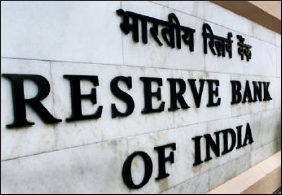|

|
RBI's pincer move to cut bank loan limit for cos
|
|

|
|
| Top Stories |
 |
|
|
|
SME Times News Bureau | 31 Mar, 2015
Corporate sector may face a double whammy if the Reserve Bank of India goes ahead with its proposed norms on the exposure of bank credit to the corporate sector.
As per a white paper circulated to stakeholders, the central bank said that not only should maximum credit come down from the existing level of 55 percent to 25 percent, but the banks should also recast what constitutes capital for companies to qualify for availing credit.
The new guidelines, designed to cut the volume of banks' non-performing assets (NPAs), or distressed debts, propose that the 25 percent limit will only apply to Tier-I capital and not, as is currently, on total capital. Tier-I describes core capital, which includes equity capital and disclosed reserves.
In a draft Large Exposure (LE) framework seeking stakeholders' views by April 30, the Reserve Bank of India (RBI) said the "sum of all the exposure values of a bank to a single counterpart or to a group of connected counter-parties must not be higher than 25 percent of the bank's available eligible capital base at all times".
"Banks must gradually adjust their exposures to abide by the LE limit with respect to the eligible capital base (effective amount of Tier-1 capital). Banks should avoid taking any additional exposure in cases where their exposure is at or above the exposure limit prescribed under this Framework," it added.
The proposed guidelines will be fully applicable from January 1, 2019.
The load on the financial system can be gauged from the fact that NPAs of public sector banks rose to 5.33 percent of total advances in September 2014, from 4.72 percent in March 2014. Gross NPAs of these banks are Rs.2,60,531 crore as in December 2014, up from Rs.71,080 crore in 2011.
Moreover, towards tightening banks' exposure to the corporate sector, the RBI has proposed that banks will have to consider any "economic inter-connect" in its exposure to the individual or group as against the previous norm of including only majority equity holding that gave a promoter or group absolute control over another corporate entity.
The RBI proposals are in line with norms on capital adequacy of the Basel Committee on Banking Supervision, formed after the financial crisis set off by the US subprime collapse of 2008-09.
|
|
|
| |
|
|
|
|
|
|
|
|
|
|
|
|
|
|
| |
| Customs Exchange Rates |
| Currency |
Import |
Export |
US Dollar
|
66.20
|
64.50 |
UK Pound
|
87.50
|
84.65 |
Euro
|
78.25
|
75.65 |
| Japanese
Yen |
58.85 |
56.85 |
| As on 13 Aug, 2022 |
|
|
| Daily Poll |
 |
 |
| PM Modi's recent US visit to redefine India-US bilateral relations |
|
|
|
|
|
| Commented Stories |
 |
|
|
|
|
|
| |
|